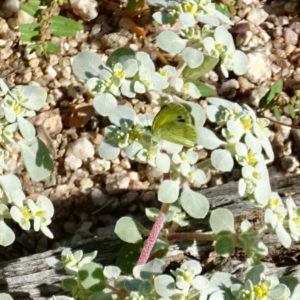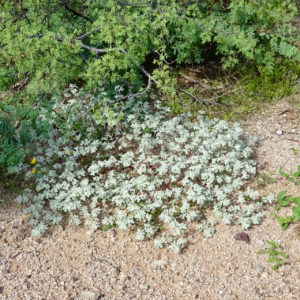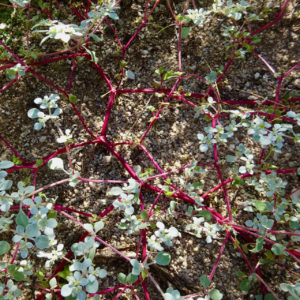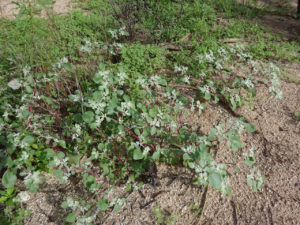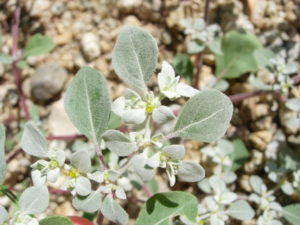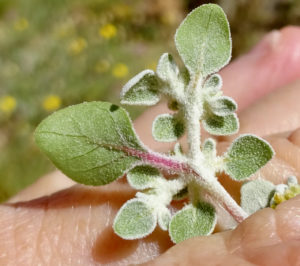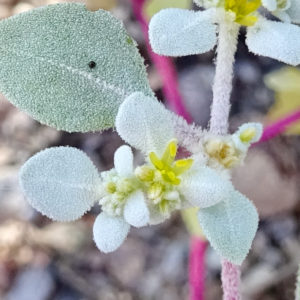Woolly Tidestromia
Tidestromia lanuginosa
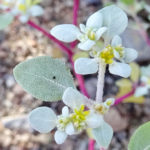
About the Plant
Woolly tidestromia is an annual that grows with the monsoon rains. Its leaves are covered with white hairs, making the plant look almost like a white rug on the ground. Each plant can be 3+ feet wide. The older stems are a bright, deep pink, a striking contrast to the rest of the plant. Though you may get a sense of yellow-ness about the plant when the flowers appear, it is always the white leaves you will notice first.
Woolly tidestromia is native to the Southwest, growing in a wide variety of soils and habitats, at elevations below 5,000 feet. It will grow in full sun but also tolerates part shade. This plant needs no care but make sure to let it go to seed naturally if you want the plant in future years. Seeds are not available commercially.
Notes:
- Woolly tidestromia is also known as honeymat. It does form a mat upon the ground. The reason for "honey"mat is not clear.
- "lanuginosa" in the scientific name means woolly or downy, a good description of the leaves.
Wildlife value:
- Woolly tidestromia attracts small insects, including butterflies. A dainty sulfur is shown in the photo below.
More Information
Technical botanical description from SEINet
